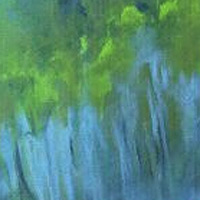by John Pollard
This wind is cold. Chilling. It is subtle. Almost unnoticeable. In fact, most of us won’t notice it. Slowly, the effects build – again, almost unnoticed – and build. There are layers. There is no perceptible pattern and the rising din creates a sort of vertigo in our minds. Confusion sets in. We feel trapped. As if there is no option, but to. . .
And, we often do.
—
Many of us, myself included, look on disdainfully from a distance thinking, “How could someone do that? I cannot believe anyone would be so stupid!”
Sometimes, suddenly, we realize that we too have done that. That we are equally as wrong.
This can be shocking to us.
—
When Barry explained the concept of the show, I was pretty excited. I loved the idea of a response to art. I loved the idea of collaborating to create an emotional response from the viewer/listener.
Barry asked about Judas’ betrayal and said, “Do you hear some sort of percussive response?”
I said, “Well, I suppose you could.” But what really came to mind was a long huge groan. (In fact, I didn’t hear any percussion!)
I looked at all the passages that discussed Judas’ betrayal. I reflected some and let it swirl around a bit in my mind. Nothing fresh really came to me.
Then Barry sent me his visual representation of the Station. He had explained the vibe a bit in our original meeting, but I had no idea what he would finally do.
I wanted the music to reflect the subtle nature of sin. How it builds slowly, almost without notice, until things feel almost out of control. A snippet mixed in from a standing mavis jam session helped create a nice sense of confusion. I think we’ve all been there.
Barry had explained how he wanted us to see ourselves in Judas. I thought that this would be somewhat shocking to many of us. So I wanted to represent that shock, that sudden realization.
I’ll love to learn how you felt after experiencing this Station – and the rest!

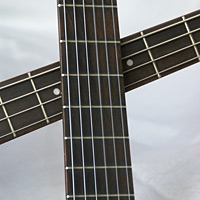 I guess I’m unsophisticated. I find I absorb & retain simple things best. Not quite down to a sound bite or the click of a shutter, but something like that. Searching the Bible for that small phrase that reveals itself to be God’s word to me for that day. Having a simple melody from Sunday worship take up residence in my head during the week.
I guess I’m unsophisticated. I find I absorb & retain simple things best. Not quite down to a sound bite or the click of a shutter, but something like that. Searching the Bible for that small phrase that reveals itself to be God’s word to me for that day. Having a simple melody from Sunday worship take up residence in my head during the week.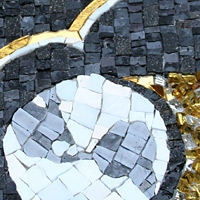
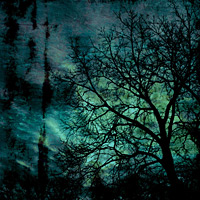 The origin of the “Stations of the Cross” grew out of an ancient liturgy and describes fourteen experiences of Jesus, along the way to Golgotha where he was crucified. These follow Jesus from the minute he is condemned to death until his entombment and on to his resurrection. Traditionally, the faithful prayed the liturgy alongside visual depictions of each station, an opportunity to contemplate each experience of Jesus slowly and thoughtfully.
The origin of the “Stations of the Cross” grew out of an ancient liturgy and describes fourteen experiences of Jesus, along the way to Golgotha where he was crucified. These follow Jesus from the minute he is condemned to death until his entombment and on to his resurrection. Traditionally, the faithful prayed the liturgy alongside visual depictions of each station, an opportunity to contemplate each experience of Jesus slowly and thoughtfully.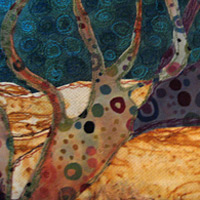 When my younger sister’s husband died suddenly, I stayed with her. Stayed right by her side 24/7. I slept by her side and even held her hand until she fell asleep. If I could have, I would have crawled inside her skin and absorbed as much of the pain as I could. But though I never left her and I spoke every word of comfort I knew into her ears and sighed deep sighs when she could barely breathe to bring her back to the moment, she walked that path alone. I tried every night to stay awake until I heard the even breathing of her stricken self. But after a few days of trying so hard to be there every second for her, I grew tired in spite of myself and then exhausted and faded earlier and earlier as the days went by. She walked that path alone even with me right there, right there. Eventually I had to get on a plane and go home to my family and other commitments. I knew that she had to be alone with it all and find some other source for her strength; some other resolve besides the one I was willing into her; some way through to the rim of the cup that was her suffering. And slowly I saw the gift in that, as I have slowly seen the gift of that in my own life. The enfolding embracing gift of alone.
When my younger sister’s husband died suddenly, I stayed with her. Stayed right by her side 24/7. I slept by her side and even held her hand until she fell asleep. If I could have, I would have crawled inside her skin and absorbed as much of the pain as I could. But though I never left her and I spoke every word of comfort I knew into her ears and sighed deep sighs when she could barely breathe to bring her back to the moment, she walked that path alone. I tried every night to stay awake until I heard the even breathing of her stricken self. But after a few days of trying so hard to be there every second for her, I grew tired in spite of myself and then exhausted and faded earlier and earlier as the days went by. She walked that path alone even with me right there, right there. Eventually I had to get on a plane and go home to my family and other commitments. I knew that she had to be alone with it all and find some other source for her strength; some other resolve besides the one I was willing into her; some way through to the rim of the cup that was her suffering. And slowly I saw the gift in that, as I have slowly seen the gift of that in my own life. The enfolding embracing gift of alone.